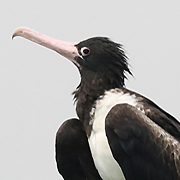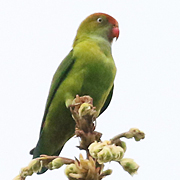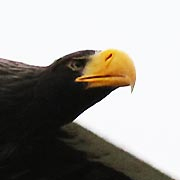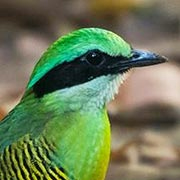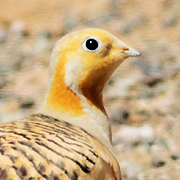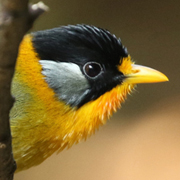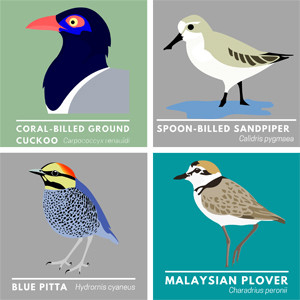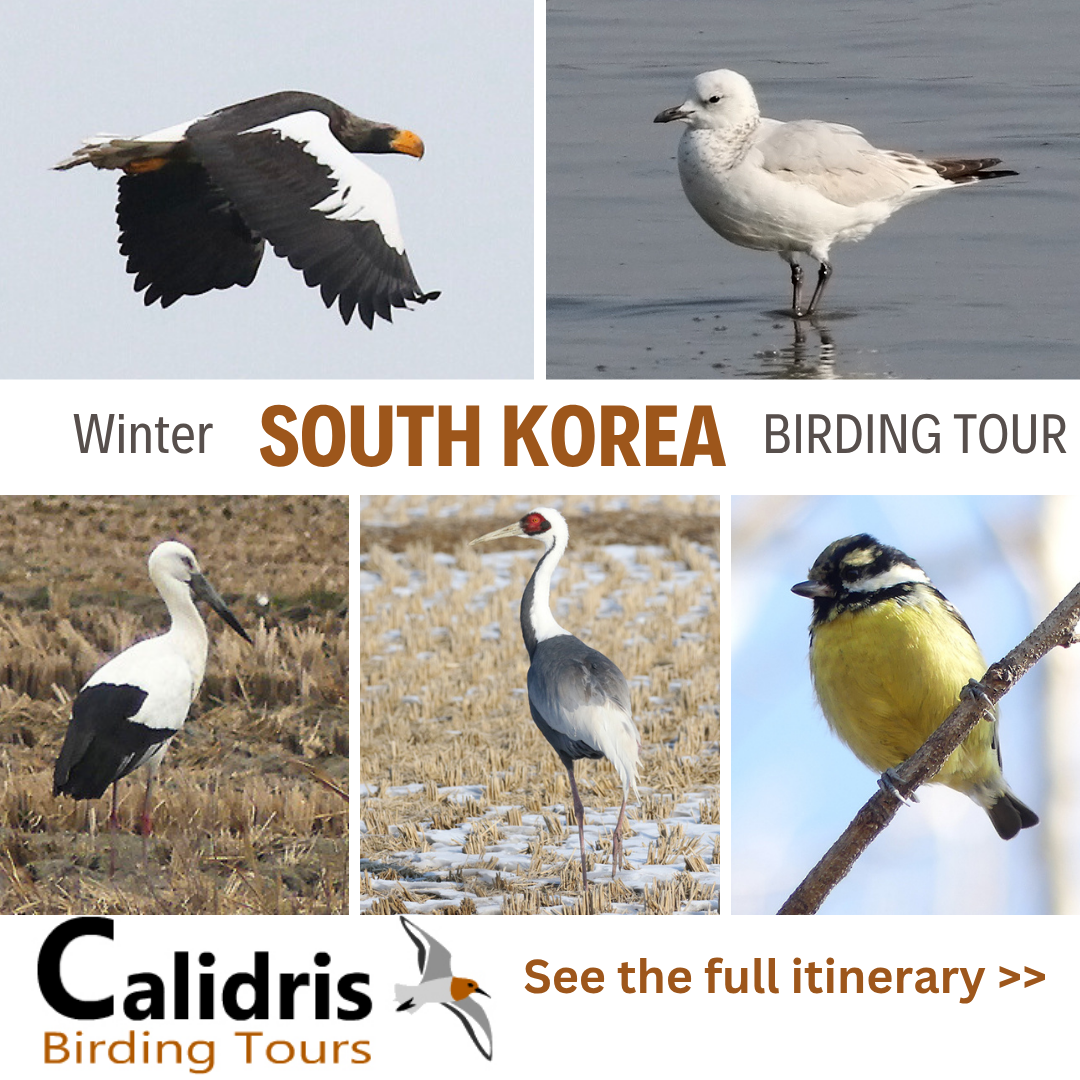On 13th March Mark Tunmore and Neil Armitage joined me for a trip to Laem Pak Bia/Pak Thale. Their priority species were Malaysian Plover, “White-faced Plover” and Black-faced Spoonbill all of which had been reported as still being present just a week previously.
The drive from the centre of Bangkok to Laem Pak Bia took the usual 2 hours and we made our first stop at the Black-faced Spoonbill site. It is worth noting that at this time in the morning, the spoonbills were not present but when we returned later in the day (about 4.30-5pm) they were both present and feeding amongst large numbers of Grey Herons and 17 Painted Storks. The morning stop at the spoonbill site did turn up some interesting birds though with Oriental Skylark, Dusky Warbler, Oriental Reed Warbler and Indochinese Bush Warbler. Amongst the Red-necked Stints was a Little Stint coming into breeding plumage.
The large flock of Great Knot were obliging at their usual spot but the Nordmann’s Greenshank, which are usually close-by, did not show up.
However, it was the trip to the sand spit which was most anticipated and we arrived just as the tide began to go out. Actually, a short distance from the spit is a sand bar and that is where our boatman (Khun Meta) skillfully landed us a short distance from a large group of terns without scaring them away. Amongst the many Common and Little Terns were 1 Caspian Tern, 5 Lesser Crested Terns and 17 Great Crested Terns. Moving on to the spit itself we quickly found Sanderling, Kentish Plover and the awaited Malaysian Plover. These birds are easily picked out from Kentish Plover by their longer legs, slimmer appearance and slightly different plumage. Many of the Malysian Plovers here also carry leg rings, making them even easier to seperate even in poor light.
Also on the beach was a Greater Sand Plover in breeding plumage – a nice sight! The “White-faced Plover” proved harder to see today than on previous trips and we spent much time scanning across the emerging mud flats and beaches looking for it. In this way we saw a Chinese Egret, a dark morph Pacific Reef Egret and a breeding plumage Javan Pond Heron as well as large numbers of Lesser Sand Plover and Kentish Plover. Occasionally we would see a pale-looking Kentish Plover, causing some excitiment, but the “White-faced Plover” is a really distinctive bird and easily picked out.
Just as we were beginning to give up and wilt from the heat a cockle-picker came along on a motorbike and flushed a group of birds from behind some rocks, onto the sand. Luckily for us this included our “White-faced Plover” which proceeded to run around and aggressively chase other birds away. Mark commented on the distinctive behaviour of this bird too as it seems to make long, fast runs across the sand where Malaysian and Kentish Plovers tend to make shorter runs.
Happy with our lot here we returned to the boat pier. We checked out the Spoon-billed Sandpiper site too but there was very little to see there – a later meeting with Uthai Treesucorn revealed that the Spoon-billed Sandpipers hadn’t been seen for 2 days. We did find 3 Pied Avocets though, close to the Black-faced Spoonbill site, and many other of the more common shorebirds.
We finished the day in the King’s Project area with drongos flying in to roost and many waders in the filter beds, including both Common and Pintail Snipe as well as a bird which was a possible Swinhoe’s Snipe – it had many features of Pintail Snipe (dark underwings, although slightly contrasting to the flight feathers, no white trailing edge to the wings, short call) but it had the long bill of a Common Snipe. If anyone has any information on the identification of Swinhoe’s Snipe I would really appreciate knowing. Other birds at the King’s Project were Black-crowned Night Heron, Ruddy-breasted Crake and Ruff.
We were very pleased with the sighting of “White-faced Plover” because it was high on the list of desired birds and because we had to work quite hard to see it. It will be interesting to know how much longer this bird stays for and when it departs for its breeding grounds -wherever that may be.
birds, birding, thailand, nature, national parks


 March 16th, 2008
March 16th, 2008  Nick
Nick  Posted in
Posted in 
